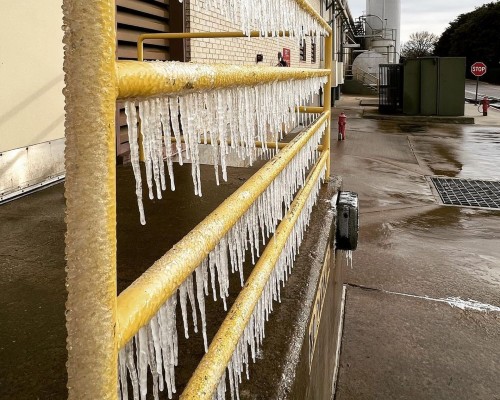You’re snugly tucked into bed, ready for a peaceful night’s sleep. But in the back of your mind, you can’t help but wonder if leaving the heat on all night really necessary.
Does turning off the heat at night save you money? Will it make a difference in your monthly expenses?
Yes, turning off the heat at night can help you save money. Lowering the thermostat by just one degree can potentially reduce your heating bill by around 1%.
The U.S. Department of Energy suggests that by adjusting your thermostat back by 10% to 15% for 8 hours, you could save up to 10% annually on your heating costs.
The Real Energy Savings: Turning Down the Heat
When it comes to heating your home, every degree matters. The common belief that turning down the heat at night saves money holds true, but the question is, how much can you really save?
1. How Much Can You Really Save?
For every degree you lower your thermostat, you can save up to 1% on your heating costs. So, if you turn down the heating by eight degrees for about eight hours a night, you could potentially save approximately $180 annually on your heating. However, these savings can vary depending on the insulation of your home, the outside temperature, and your comfort level.
2. The Science Behind Lowering the Thermostat
The science behind these savings lies in the rate at which your home loses heat. When it’s cold outside and warm inside, your home loses heat quickly.
Your furnace works hard to compensate for this heat loss and maintain your chosen temperature. However, if you turn down the heat, your home won’t lose as much heat, reducing the workload on your furnace.
Although your furnace will have to work to bring up the interior temperature in the morning when you turn up the thermostat, this cost of heating will not be as much as when you maintain a constantly warm indoor temperature.
The Role of a Programmable Thermostat in Energy Savings
1. The Convenience of Automated Temperature Control
Imagine a world where your home’s temperature adjusts automatically based on your daily schedule. A world where you no longer have to remember to tweak your thermostat settings before rushing out the door or crawling into bed. This is the convenience that programmable thermostats bring to your life.
Now, let’s talk numbers. According to Energy Star, the average household shells out over $2,200 annually on energy bills. Shocking, right?
And here’s another surprise – almost half of this energy is used for heating and cooling your home.
But what if you could optimize this usage? That’s where programmable thermostats come in, offering significant savings.
2. Maximizing Savings with a Programmable Thermostat
Programmable thermostats can save you a lot of money. For every degree Fahrenheit, you dial down your thermostat, you could use up to 3% less energy. So, if you were to lower your heating by 10 degrees Fahrenheit for eight hours a day (say, while you’re at work or fast asleep), you could slash your energy consumption by a whopping 30%.
But here’s the catch – the secret to unlocking these savings lies in your usage of the thermostat. Consistency is key. By setting up a regular schedule that mirrors your daily habits and sticking to it, you can maximize your energy savings.
Turning Off Heat at Night to Save Money – The Risks Involved
While turning off your heat at night might seem like a straightforward way to save on energy costs, it’s important to consider the potential risks involved. Let’s delve into some of the key concerns.
1. The Threat of Frozen Pipes

Another significant risk of turning off your heat at night, particularly in colder climates, is the threat of frozen pipes.
When the temperature in your home drops significantly, the water in your pipes can freeze.
This not only disrupts your water supply but can also cause the pipes to burst, leading to potentially extensive water damage and costly repairs.
2. Impact on Indoor Air Quality
Allowing the temperature to drop dramatically can affect indoor air quality. Low temperatures may lead to excess humidity, which can create a breeding ground for mold and mildew.
Additionally, cold air may not circulate adequately, leading to stale air and discomfort for occupants.
3. Discomfort and Sleep Disturbances
One of the most immediate effects of turning off your heat at night is the impact on your comfort and sleep quality. The human physique possesses an inherent slumber-alert pattern, commonly referred to as the circadian rhythm, that gets affected by the surrounding temperature.
Cold temperatures can disrupt this rhythm, leading to difficulty falling asleep and frequent awakenings during the night.
4. Potential Health Risks
In addition to the discomfort and potential property damage, there are also potential health risks associated with living in a cold house. Cold temperatures can exacerbate certain health conditions such as arthritis and respiratory issues.
Furthermore, a cold environment can lower your immune system’s effectiveness, making you more susceptible to common colds and flu.
Expert Tips for Efficient Heating and Lower Bills
Efficient heating is not just about the right equipment; it’s also about how you use it. Here are some expert tips to help you heat your home more efficiently and lower your bills.
1. Regular Maintenance and Heating Efficiency
Regular maintenance of your heating system is crucial for its efficiency. An annual inspection of your furnace by a professional can prevent costly repairs down the line.
Cleaning your heating system, including ductwork and filters, is another cost-effective way to improve its efficiency. As much as 20% to 30% of heated air can be lost to leaks in ductwork.
2. Insulation: The Key to Preventing Heat Loss

Proper insulation is key to preventing heat loss. Sealing up cracks around windows and doors can save an average of 15% on heating and cooling costs.
Furthermore, using thermal curtains or Low-E window film can help prevent heat loss through windows, which account for about 30% of a home’s heating energy loss.
Weatherstripping and caulking around all joints and frames of windows and doors can also help prevent heat loss.
Final Words
To put it briefly, the choice to shut off the heating at night to conserve funds is not a universally applicable strategy. It’s a balance between potential savings and the risks involved, such as discomfort, potential health issues, and the threat of frozen pipes.
While lowering the thermostat can indeed save money, the amount saved can vary greatly depending on individual circumstances, including the insulation of your home and the outside temperature. The key is to find a balance that works for you, ensuring comfort and health while also being mindful of energy consumption.
I’m Grayson Watson, your frugal companion and the brain behind this money-saving extravaganza. Strap yourself in, because we’re about to embark on a wallet-friendly adventure like no other. Learn More!

